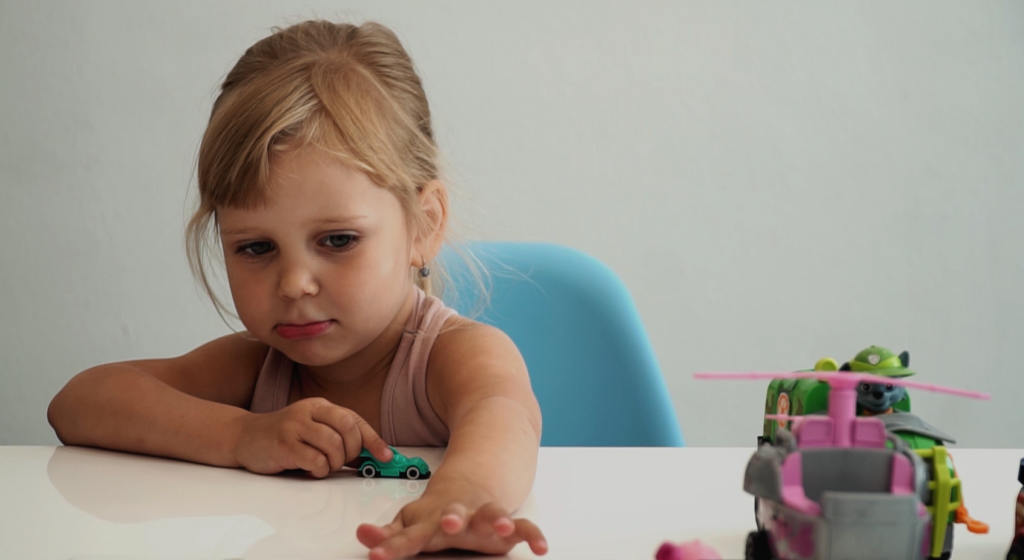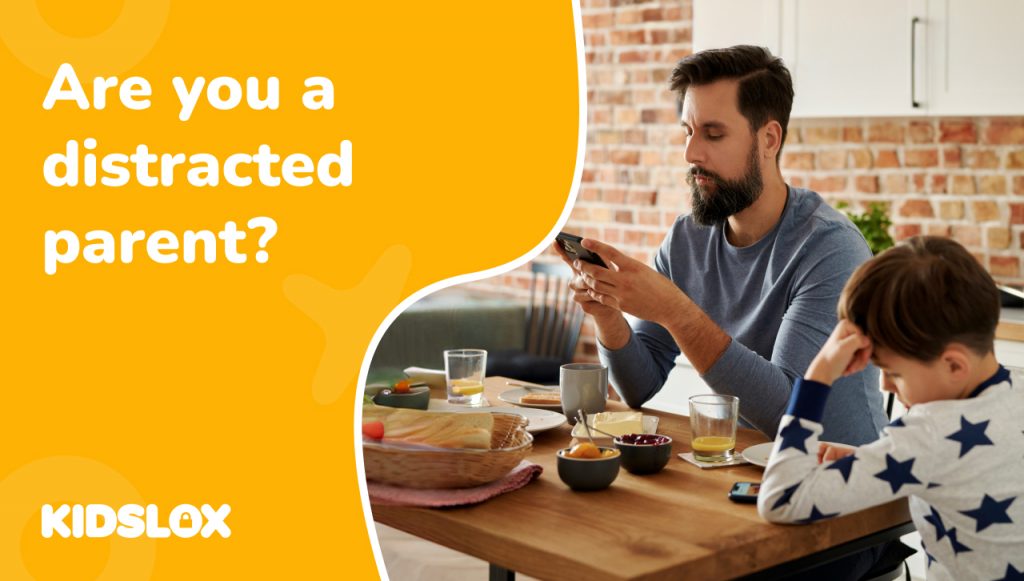Kidslox team believes that our future depends on using imagination. Motivating children to use imagination is a very responsible task for parents. Today we live in a digital world which steals our ability to develop the skills of daydreaming. Those black screens are only dictating their own rules which we used to observe. Gadgets for our kids are like bounded boxes with no access to the world of creativity and reality in general.
That’s the reason why we made our own experiment “Gadget or Toy?” Parents asked their minors to wait for them for 5 minutes in a separate room. We left a toy and a gadget on the table to choose from. Watch who wins! Modern children have a wide range of toys but they also grow up with gadgets beside them. Are you sure that your child is protected from the persuasive screen? The huge tech-companies do everything to grab children’s attention with smartphones or tablets. Kidslox parental control app in its turn does everything to ensure kids wellbeing.
“A toy should be 10 percent toy and 90 percent child”
– Kathy Hirsh-Pasek, a professor of psychology at Temple University.
Physical play and reading books encourage imagination and creativity. We’ve noticed this with our children as well, especially when they engage in an individual play. That’s when kids get a chance to figure things out on their own, without having the adults, or a smartphone/tablet, to tell them what to do. “Kids are born scientists. They are born curious about the world,” – Neil deGrasse Tyson, a world-renowned cosmologist said about a child’s innate desire for exploration.
When they are staring at the screen, they don’t have the opportunity to explore the things around them. The animation or online game on the tablet will do all the work for the child’s brain – figuring out what you see or how to play is the only real task. When children interact with traditional toys or read an illustrated book, their brain works better. In this case, the increase of connectivity among all the networks of the brain has already been proved by scientists. Especially, if we talk about imagery.
A recent study shows that babies and toddlers addicted to touchscreen games may have lower verbal skills as compared with their toy peers. Moreover, teachers warn parents that being overexposed to iPads and other gadgets children lack the motor skills to perform simple tasks such as using building blocks. The UK Association of Teachers and Lecturers warn of kids’ excessive tablet usage “including possible withdrawal, loss of interest in or ‘crowding out’ other activities, lack of control, irritability, deception and furtiveness, poor performance, poor concentration and a loss of educational opportunities.”
Therefore, even the flashiest, the most interactive gadget is no replacement for playing and reading. And of course, it’s better when mom and dad can play with their kids and read them stories.
We followed up Neil Geiman’s idea of an obligation to imagine. He is a well-known English author of fiction. He gave the advice about how to see the importance of human’s daydreaming: “Look around you: I mean it. Pause, for a moment and look around the room that you are in. I’m going to point out something so obvious that it tends to be forgotten. It’s this: that everything you can see, including the walls, was, at some point, imagined. Someone decided it was easier to sit on a chair than on the ground and imagined the chair. Someone had to imagine a way that I could talk to you in London right now without us all getting rained on. This room and the things in it, and all the other things in this building, this city, exist because, over and over and over, people imagined things.”
How chid’s brain works for creativity
Everything changes when we experiment with things and realize that things can be different. Everything changes when we read because books can show us a different world. It can take your child somewhere they have never been. Books teach us to be different people and live different lives and stories. Fairy tales and fiction are for building child’s empathy and escapism. They are about freedom of ideas and information, about education, about communication, and entertainment. And what gadgets are for? They are mainly for entertainment.
However, these days parents have a lot of options when it comes to reading a story for a kid. They can read an illustrated book, play an audiobook, put on a cartoon, or even ask Alexa. Kidslox wants to tell parents about the Dr. John Hutton’s study, which explains what may be happening inside your children’s brains in each of those situations. He is a researcher and pediatrician at Cincinnati Children’s Hospital. He had an idea to realize what brain networks were likely to be influenced by the story: language, visual perception, visual imagery and the default mode network – “how something matters to you.” So, Hutton read three versions of the story (audio only, the illustrated pages with a voiceover, and an animated cartoon) to 27 children around the age 4. While kids paid attention to the stories, the MRI machine scanned for activation within certain brain networks, and connectivity among them. Here’s what the research found:
- The only-audio condition was “too cold”: language networks were activated, but there was less connectivity between all the networks.
- The animation condition was “too hot”: the audio and visual perception networks showed a lot of activity, but not a lot of connectivity among the various brain networks. “The cartoon was doing all the work for the child,” – Dr. John Hutton explained. The kid’s comprehension of the story was the worst in this condition.
- The illustrated storybook was “just right”: it increased connectivity between all the networks they were looking at: visual perception, imagery, language and default mode.
“When we read to our children, they are doing more work than meets an eye. It’s a muscle they are developing bringing to life in their minds”
– Dr. John Hutton claims.
Parents have an obligation to read aloud to the children. Besides, adults should teach the kids to read for pleasure. Use reading-aloud time, as the time when no phones are being checked, when the distractions of the world are put aside. Your dialogue reading with a child is the most effective thing you can do. The emotional bonding and physical closeness are always missing during any study. Learn, play and exercise the imagination and creativity together.





